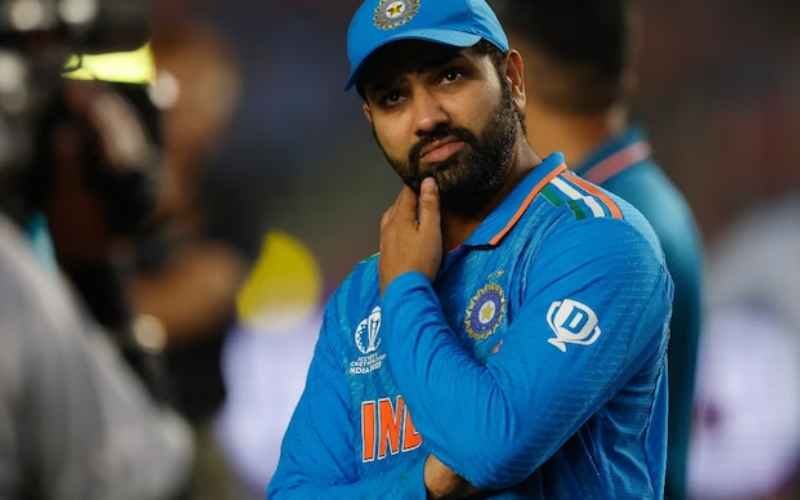India’s captain Rohit Sharma has faced significant criticism following strategic missteps during the second Test against New Zealand in Pune. As of the tea break on Day 2, New Zealand had managed to post 85/2 in their second innings, consolidating a commanding position due to India’s lack of assertive field placements and delayed bowling decisions. Former India head coach Ravi Shastri and other commentators have openly questioned Sharma’s tactics, calling them overly cautious and, at times, reactive, rather than proactive.

In the first innings, Rohit’s decision to delay bringing experienced spinner Ravichandran Ashwin into the attack was particularly contentious. Although the pitch showed signs of turn, Rohit opted to persist with pacers and other spinners, despite Ashwin’s proven record in similar conditions. When Ashwin finally bowled, he managed to trouble the New Zealand batters with multiple near-dismissals, suggesting that his early intervention could have shifted momentum in India’s favor. However, by then, the game was already tilting towards New Zealand, with India struggling to contain runs and unable to build pressure through wickets.
Rohit’s approach has drawn ire not only from Shastri but also from former cricketers and analysts who have described his choices as excessively defensive. These critics argue that Sharma’s conservative fielding settings allowed New Zealand to comfortably rotate the strike and set partnerships without significant risk. In critical moments, Sharma refrained from implementing aggressive strategies such as placing fielders in close-catching positions or rotating bowlers with wicket-taking potential, further allowing the New Zealand team to consolidate their lead.
Sharma’s leadership in this series has drawn scrutiny after a series of blunders in the previous Bengaluru Test, where India suffered an eight-wicket defeat. Analysts and fans alike were perplexed by Sharma’s decision to bat first on a pitch that seemed to favor bowlers early on, resulting in India’s collapse for just 46 runs. In both matches, his choices have prompted comparisons to the leadership styles of past Indian captains, particularly MS Dhoni, whose tactical acumen in Test cricket was known for turning games around through decisive moves.
As the Test series unfolds, Sharma’s captaincy is facing growing calls for a shift towards more aggressive tactics. India’s performance under his leadership is under examination, with commentators stressing that if India is to secure a comeback in the series, the team’s approach must adapt swiftly to avoid handing New Zealand further opportunities to capitalize.
Rohit Sharma’s Captaincy Blunder: Tactical Missteps Cost India in Pune Test Against New Zealand
The recent India vs New Zealand Test 2024 in Pune has brought the spotlight onto Rohit Sharma’s captaincy blunder, which many believe played a crucial role in India’s faltering performance. With New Zealand consolidating their position at 85/2 at tea on Day 2, critics have been vocal about the Indian captain’s strategies, or lack thereof, particularly during pivotal moments of the game. Former head coach Ravi Shastri’s criticism echoed the sentiments of fans and analysts alike, pointing out key errors in Sharma’s on-field decisions.
The Pune Test has seen Rohit Sharma’s leadership come under scrutiny after he made questionable choices concerning field placements and bowler rotation. Despite India starting with a solid plan, the inability to adjust strategies as the game progressed allowed New Zealand to build steady partnerships, shifting momentum in favor of the visitors.
Defensive Tactics and Poor Field Placements Under Scrutiny
One of the major critiques leveled against Rohit Sharma during the India New Zealand Test series 2024 has been his overly defensive approach. Analysts observed that Rohit’s field placements often failed to exert pressure on New Zealand’s batsmen, allowing them to rotate strike easily and keep the scoreboard ticking. Defensive fields, which were meant to contain runs, inadvertently helped New Zealand build confidence and partnerships, putting India on the back foot.
Commentators and former cricketers, including Ravi Shastri, expressed concern over this strategy. Shastri was particularly critical of the lack of close-in fielders during key phases of the game when the pitch conditions seemed conducive to spin, which could have created chances for breakthroughs. He pointed out that even when Ravichandran Ashwin was finally introduced into the attack, fielders were placed defensively, negating the potential impact of an attacking bowler like Ashwin.
Missed Opportunities and Delayed Bowling Changes
Rohit Sharma’s delayed decisions in making bowling changes also drew heavy criticism. With the pitch in Pune offering assistance to spin, many expected Ashwin to bowl early in the second innings to capitalize on the turn and bounce. However, Sharma’s delay in bringing him into the attack until the game had already started slipping away was seen as a significant captaincy blunder. According to match reports, Ashwin was finally handed the ball, and within just two overs, he created multiple chances, suggesting he could have been more effective had he been deployed earlier
.
Moreover, during New Zealand’s first innings, when batsmen Rachin Ravindra and Tim Southee were in a strong position, the choice to persist with spinners instead of switching to pacers allowed the Kiwis to add crucial runs to their total. Former players, such as Parthiv Patel, were quick to point out that bringing back pace at that moment could have broken the partnership and restricted New Zealand to a lower score
.
Ravi Shastri’s Criticism: Calls for More Aggressive Captaincy
Former head coach Ravi Shastri did not mince words when addressing the ongoing issues with Rohit’s leadership during the India New Zealand Test series 2024. In a post-match analysis, Shastri highlighted how the captain’s choices in Pune mirrored similar errors from the previous Bengaluru Test, where India’s lack of tactical adaptability contributed to their eight-wicket loss. Shastri emphasized that in a five-day format, it is essential for the captain to remain proactive and adjust tactics according to changing situations on the field.
“Rohit needs to be more aggressive with his field placements and make timely decisions on bowling changes. Playing a waiting game doesn’t work when you’re trying to wrestle control back from a strong batting lineup like New Zealand’s,” Shastri said during the post-match analysis. His remarks were echoed by other experts, who noted that Rohit’s tendency to stick to pre-set plans without reacting to real-time developments on the field cost India valuable chances to shift momentum
.
Consequences for India’s Test Campaign
The India New Zealand Test series 2024 has seen New Zealand capitalize on India’s missed opportunities, and Rohit Sharma’s captaincy blunder has been a key talking point. With India’s hopes of winning the series now under threat, critics are calling for a reassessment of the team’s approach. The defensive tactics seen in Pune need to be replaced with more aggressive, proactive decisions if India hopes to level the series.
The Indian cricket team will need to introspect and adapt swiftly. With Ravi Shastri’s criticism resonating with fans who expected a more assertive performance on home soil, Rohit Sharma’s leadership approach may need to undergo a significant shift. Field placements that create wicket-taking opportunities and quicker, more effective bowling changes could be the key to reversing India’s fortunes in the remaining matches.
Conclusion: A Learning Curve for Rohit Sharma
Rohit Sharma’s recent performances as a captain in the ongoing India vs New Zealand Test series 2024 have sparked debates over his suitability to lead the team in the longer format. While his success in limited-overs cricket is well-documented, Test cricket demands a different level of strategic acumen and on-field adaptability. This series has proven to be a steep learning curve, with experts like Ravi Shastri emphasizing the need for aggression, timely decision-making, and more innovative field settings.
Moving forward, how Sharma addresses these challenges will determine not only the outcome of this series but also his legacy as a leader in Indian Test cricket. The Pune Test has been a wake-up call, and with New Zealand holding the upper hand, India will need to rethink their strategy and hope for a more assertive approach from their captain.












